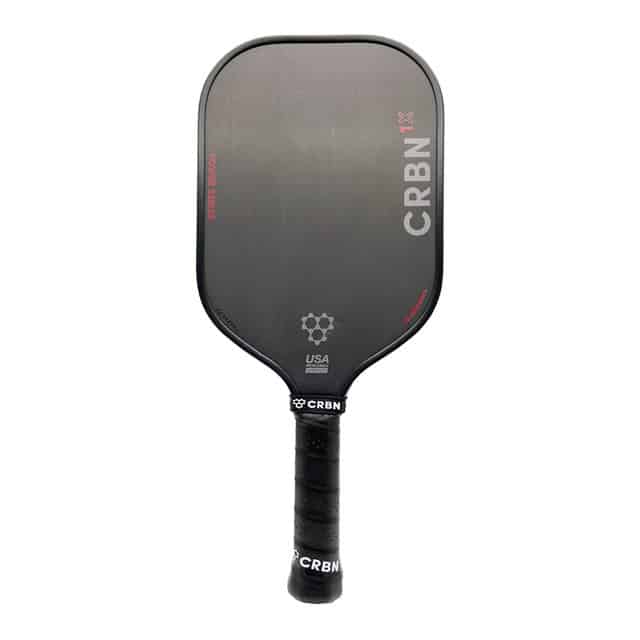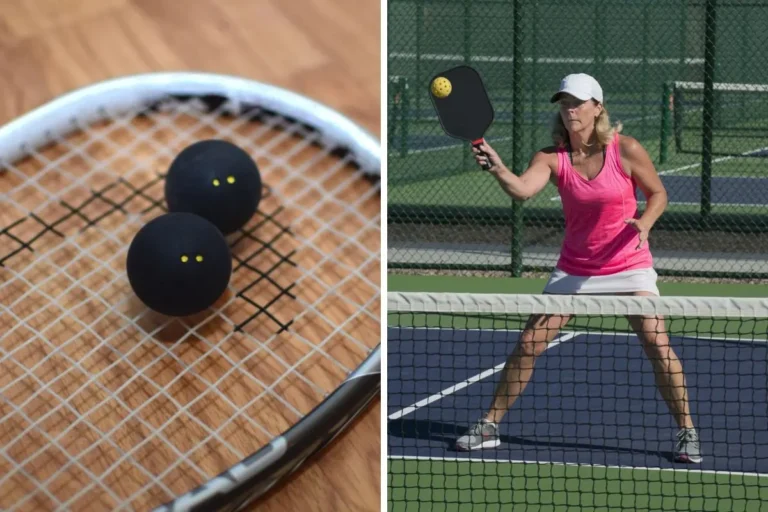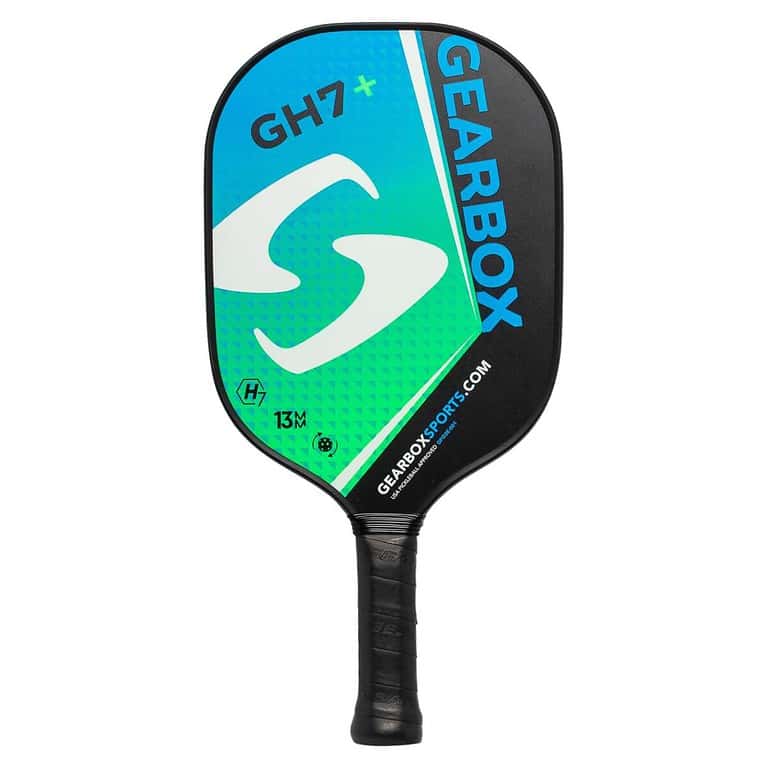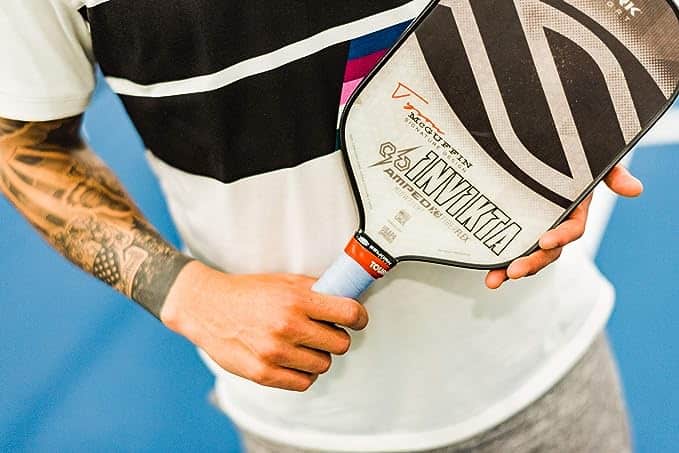What is Swing Weight in Pickleball: 5 Ways It Impacts Your Game
Swing weight is a term that you may have heard when shopping for a pickleball paddle. But what does it actually mean? In short, swing weight is how heavy the paddle feels in your hand when you swing it. It’s a crucial factor to consider when selecting a paddle that’s right for you.
The swing weight of a paddle is determined by both the total weight of the paddle and how that weight is distributed. A paddle with a high swing weight will feel heavier when swung, even if it has the same static weight as a paddle with a lower swing weight. This can affect your swing speed, control, and overall performance on the court. Understanding swing weight is essential for picking a paddle that complements your playing style and skill level.

Understanding Swing Weight in Pickleball
As a pickleball player, it is important to understand the concept of swing weight. Swing weight is a term that is used to describe the overall feel of a paddle when it is swung. It is determined by the distribution of weight throughout the paddle and can have a significant impact on a player’s performance.
In pickleball, swing weight is particularly important because it can affect the speed, power, and control of a player’s shots. A paddle with a high swing weight will be more difficult to swing quickly, which can make it harder to generate power and control. On the other hand, a paddle with a low swing weight will be easier to swing quickly, which can lead to more power and control.
Pickleball science has shown that a paddle’s swing weight must be matched to a player’s ability. A beginner player may benefit from a paddle with a lower swing weight, as it will be easier to swing and control. A more advanced player, however, may benefit from a paddle with a higher swing weight, as it can provide more power and control.
Table 1 shows the swing weight and sweet spot data for several paddles sorted according to their swing weight. This table can be a helpful resource when selecting a paddle that is right for you.
| Paddle Name | Swing Weight | Sweet Spot |
|---|---|---|
| Paddle A | 7.5 oz | 8.5 in |
| Paddle B | 8.2 oz | 8.0 in |
| Paddle C | 8.5 oz | 7.5 in |
| Paddle D | 9.0 oz | 7.0 in |
What Is The Difference Between Swing Weight And Paddle Weight?
It is important to note that swing weight is not the same as paddle weight. Paddle weight refers to the actual weight of the paddle, while swing weight refers to how the weight is distributed throughout the paddle. A paddle with a low swing weight may still be heavy, while a paddle with a high swing weight may be relatively light.
In conclusion, understanding swing weight is critical for any serious pickleball player. By selecting a paddle with the right swing weight for your skill level and playing style, you can improve your performance and enjoy the game even more.
Swing Weight and Paddle Characteristics
As a pickleball player, understanding the concept of swing weight is essential in choosing the right paddle for your game. A paddle’s swing weight is determined by its mass moment of inertia, which is an indication of the paddle’s resistance to rotation. The swing weight of a paddle is a crucial factor in determining how easy it is to maneuver.
Paddle Weight
Paddle Weight vs Static Weight
The weight of a paddle is the first characteristic that comes to mind when considering paddle selection. However, it is important to note that the static weight of a paddle is different from its swing weight.
Static weight refers to the overall weight of the paddle, while swing weight is the weight distribution of the paddle. A paddle with a high static weight may have a low swing weight, making it easier to maneuver.
Paddle Face
The face of the paddle is another important characteristic to consider when selecting a paddle. The face of the paddle is the part of the paddle that comes in contact with the ball.
A paddle with a larger face will have a larger sweet spot, which is the area on the paddle that provides the most power and control. A larger sweet spot will also make it easier to hit the ball with accuracy.
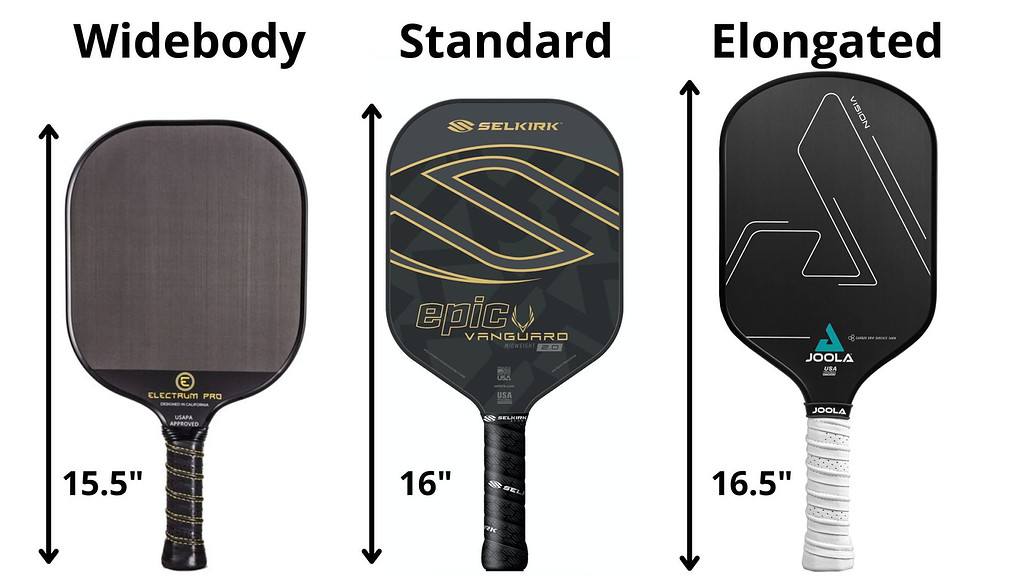
Sweet Spot
The sweet spot is an important characteristic of a paddle that determines the amount of power and control that can be generated. The sweet spot is the area on the paddle that provides the most power and control when hitting the ball. A paddle with a larger sweet spot will provide more power and control than a paddle with a smaller sweet spot.
Paddle Moment of Inertia
The moment of inertia of a paddle is a measure of how resistant the paddle is to rotational motion.
A paddle with a higher moment of inertia will be more difficult to rotate than a paddle with a lower moment of inertia.
The moment of inertia of a paddle is an important factor in determining its swing weight. A paddle with a high moment of inertia will have a higher swing weight, making it more difficult to maneuver.
In conclusion, understanding the characteristics of a paddle and how they affect its swing weight is crucial in selecting the right paddle for your game. The weight, face, sweet spot, and moment of inertia are all important factors to consider when selecting a paddle that will provide the power and control necessary to take your game to the next level.
Swing Weight and Player Performance
Swing weight is an important factor to consider when selecting a pickleball paddle. It is a measure of a paddle’s resistance to rotation and is determined by its mass moment of inertia. The swing weight of a paddle can affect a player’s control, power, speed, rotation, torque, reaction times, reflexes, and accuracy.
Control and Accuracy
Swing weight can affect a player’s control and accuracy by influencing the paddle’s maneuverability. A paddle with a higher swing weight will require more effort to move and may make it more difficult to control the direction and placement of the ball. On the other hand, a paddle with a lower swing weight will be easier to move and may allow for more precise shots.
Power and Speed

Swing weight can also impact a player’s power and speed by affecting the paddle’s momentum. A paddle with a higher swing weight will have more momentum and may generate more power and speed on hits. However, a paddle with a lower swing weight will be easier to swing and may allow for quicker reaction times and faster shots.
Rotation and Torque
Swing weight can influence a player’s rotation and torque by affecting the paddle’s stability. A paddle with a higher swing weight will be more stable and may provide more control and accuracy on spin shots. However, a paddle with a lower swing weight will be more maneuverable and may allow for more spin on shots.
Reaction Times
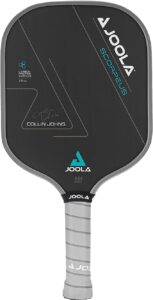
Swing weight can also impact a player’s reaction times by affecting the paddle’s responsiveness. A paddle with a lower swing weight will be easier to move and may allow for quicker reaction times on returns. However, a paddle with a higher swing weight may provide more stability and control on shots, which can be beneficial for defensive play.
Overall, swing weight is an important factor to consider when selecting a pickleball paddle. It can affect a player’s control, power, speed, rotation, torque, reaction times, reflexes, and accuracy. By understanding the impact of swing weight on player performance, players can make informed decisions when selecting a paddle that best suits their style of play.
List Of Top Paddles With High Swing Weights
| Paddle | Swing Weight |
|---|---|
| Paddletek Bantam X5 | 118 |
| Joola Perseus | 115 |
| Paddletek Tempest Wave Pro | 112 |
| Paddletek Bantam EX1 | 110 |
| Selkirk Vanguard Hybrid | 110 |
| Crbn 2 | 108 |
| Volair Mach 1 | 106 |
| Selkirk Amped | 106 |
List Of Top Paddles With Low Swing Weights
| Paddle | Swing Weight |
|---|---|
| Gearbox CX14H | 52 |
| Engage Pursuit MX | 56 |
| TMPR Tantrum LX | 57 |
| Diadem Vice | 58 |
| Joola Scorpeus | 62 |
| Paddletek Tempest Wave | 68 |
Swing Weight in Different Sports
Swing weight is a term used in various sports to describe the weight distribution of a racket or club. It is an important factor in determining the maneuverability and power of the equipment. In this section, I will discuss how swing weight affects the performance of tennis rackets and golf clubs.
Tennis
Tennis rackets come in different sizes, shapes, and weights. The swing weight of a tennis racket is determined by the distribution of weight along its length. A racket with a higher swing weight will be more difficult to maneuver but will generate more power. Conversely, a racket with a lower swing weight will be easier to move but will produce less power.
The swing weight of a tennis racket is affected by several factors, including the length of the racket, the size of the head, and the weight of the handle. Generally, a longer racket will have a higher swing weight, while a larger head size will result in a lower swing weight. The weight of the handle also plays a role, with a heavier handle increasing the swing weight.
Golf
In golf, swing weight is used to describe the weight distribution of a clubhead. A club with a higher swing weight will be more difficult to swing but will generate more power. A club with a lower swing weight will be easier to swing but will produce less power.
The swing weight of a golf club is determined by the distribution of weight along the length of the club. A club with more weight towards the head will have a higher swing weight, while a club with more weight towards the grip will have a lower swing weight.
Golfers can adjust the swing weight of their clubs by adding or removing weight from the clubhead or grip. This can be done by using specialized equipment or by purchasing clubs with adjustable weights.
Overall, swing weight is an important factor in determining the performance of tennis rackets and golf clubs. By understanding the relationship between swing weight and power, players can select equipment that suits their playing style and skill level.
Impact of Swing Weight on Player’s Health
As a pickleball player, I understand the importance of selecting the right paddle for my game. One crucial factor that affects my gameplay and health is the swing weight of the paddle.
Swing weight is the measure of how heavy a paddle feels in your hand when you swing it. It is crucial to understand the impact of swing weight on a player’s health to make an informed decision when selecting a paddle.
Fatigue
Swing weight can affect a player’s fatigue level during a game. A heavy paddle can cause a player’s arm to tire quickly, leading to a decline in performance. On the other hand, a light paddle may not provide enough power, causing a player to overcompensate with their arm, leading to fatigue and potential injury.
Arm Injuries
Swing weight can also cause arm injuries, such as tennis elbow. Tennis elbow is a common injury among pickleball players that results from overusing the forearm muscles. A heavy paddle can exacerbate this condition by putting more strain on the muscles, leading to pain and discomfort. It is crucial to select a paddle with a swing weight that matches your strength and skill level to prevent arm injuries.
Tennis Elbow
Tennis elbow is a painful condition that results from overusing the forearm muscles. It is a common injury among pickleball players, especially those who use a heavy paddle. A paddle with a high swing weight can exacerbate tennis elbow by putting more strain on the muscles and tendons in the forearm. It is essential to select a paddle with a swing weight that matches your strength and skill level to prevent tennis elbow.
In conclusion, swing weight is a crucial factor to consider when selecting a pickleball paddle. It can affect a player’s fatigue level, arm injuries, and tennis elbow. It is essential to select a paddle with a swing weight that matches your strength and skill level to prevent these issues.
Choosing the Right Swing Weight
As a pickleball player, choosing the right paddle is crucial to your game. One of the most important factors to consider when selecting a paddle is the swing weight. The swing weight is the amount of effort required to swing the paddle through the air. It is determined by the paddle weight and the balance point. A paddle with a higher swing weight will require more effort to swing, but it will also generate more power.
Brand Consideration
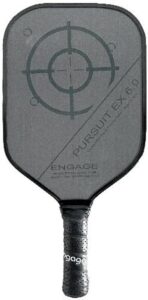
When it comes to choosing a brand, there are several options available. Engage Pursuit EX 6.0, Paddletek, Head Gravity, and Joola Collin Johns Scorpeus CFS are some of the popular brands in the market. Each brand has its own unique features and characteristics that cater to different playing styles.
Paddle Weight vs Swing Weight
It is important to note that paddle weight and swing weight are not the same thing. Paddle weight is the actual weight of the paddle, whereas swing weight is the perceived weight of the paddle when it is swung.
A heavier paddle will have a higher swing weight, but it will also generate more power. However, a lighter paddle will be easier to swing and maneuver, but it may lack the power of a heavier paddle.
When selecting a paddle, it is important to find the right balance between paddle weight and swing weight. A paddle with a higher swing weight may be more powerful, but it may also be more tiring to use. On the other hand, a paddle with a lower swing weight may be easier to use, but it may not generate as much power.
Engage Pursuit MX is a paddle that offers a good balance between paddle weight and swing weight. It has a medium weight of around 7.8 ounces and a balanced swing weight. This makes it a versatile paddle that can be used by players of different skill levels.
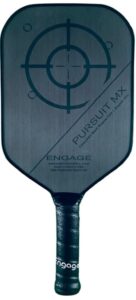
In conclusion, choosing the right swing weight is crucial to your game. It is important to find the right balance between paddle weight and swing weight to achieve the best results. When selecting a brand, consider the unique features and characteristics of each brand. With the right paddle and swing weight, you can take your game to the next level.
Additional Resources
Videos
If you are a visual learner, there are plenty of videos available on YouTube that can help you understand swing weight in pickleball paddles. One video that I found particularly helpful is this one by Pickleball Channel. It provides a clear and concise explanation of swing weight and how it affects your game.
Another great resource is the TMPR Paddles YouTube channel. They have a variety of videos that cover everything from paddle selection to technique tips. Their videos on swing weight are especially informative and can help you choose the right paddle for your game.
Frequently Asked Questions
How can you measure the swing weight of a pickleball paddle?
Measuring the swing weight of a pickleball paddle can be done using a swing weight scale. This tool measures the paddle’s resistance to rotation and is typically measured in units of grams per square centimeter. Swing weight can also be calculated by using the paddle’s mass, length, and balance point.
What is a head heavy pickleball paddle?
A head-heavy pickleball paddle is one where the majority of the weight is located in the head of the paddle. This type of paddle can provide more power to shots due to the increased momentum generated by the weight in the head. However, it may also be more difficult to maneuver due to the weight distribution.
What is the coefficient of friction for a pickleball paddle?
The coefficient of friction for a pickleball paddle refers to the amount of grip or traction the paddle has on the ball. A higher coefficient of friction can help generate more spin on shots, but may also result in less power. The coefficient of friction can be influenced by the materials used to make the paddle and the surface texture.
How does lead tape placement affect a pickleball paddle’s swing weight?
Adding lead tape to a pickleball paddle can increase its swing weight by adding more weight to the paddle. The placement of the lead tape can also affect the balance point of the paddle, which can impact how it feels during use. It’s important to note that adding too much weight to a paddle can also negatively affect its performance.
What is the difference between XSPAK swing weight and twist weight in pickleball paddles?
XSPAK swing weight and twist weight are two different measurements used to describe a pickleball paddle’s performance. Swing weight refers to the paddle’s resistance to rotation, while twist weight refers to the amount of torque generated when hitting the ball. Both measurements can impact how a paddle feels and performs during use.
Are there any recommended pickleball paddles based on their swing weight?
There is no one-size-fits-all answer to this question, as the ideal swing weight for a paddle can vary depending on a player’s individual preferences and playing style.
Some players may prefer a lighter paddle with a lower swing weight, while others may prefer a heavier paddle with a higher swing weight.
It’s important to try out different paddles and find one that feels comfortable and performs well for your individual needs.


